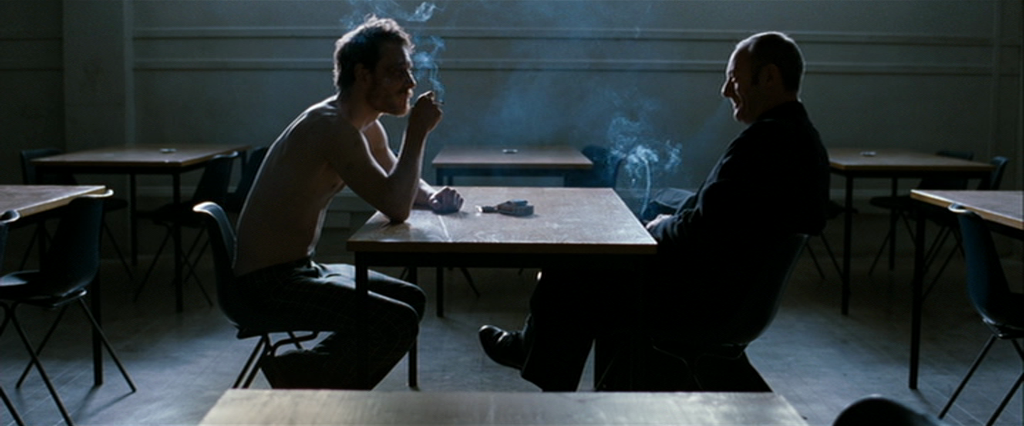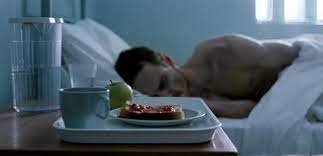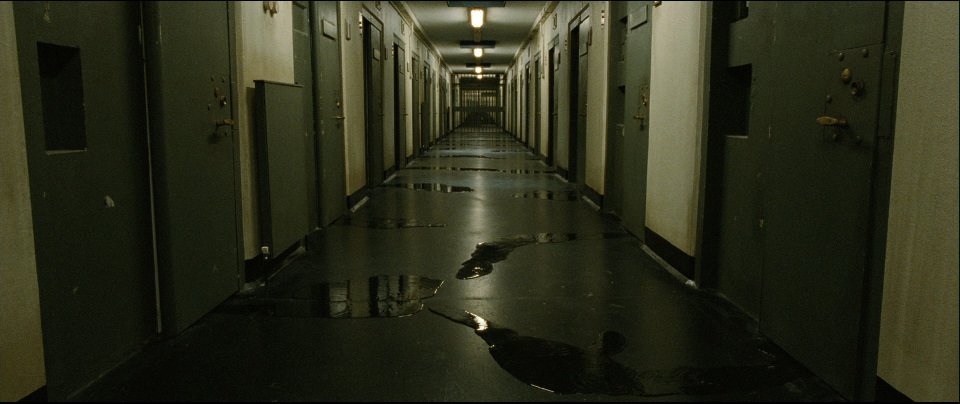HUNGER
/2008
DIRECTOR: Steve McQueen
WRITTEN BY: Steve McQueen & Enda Walsh
CINEMATOGRAPHER: Sean Bobbitt
BUDGET: £1,500,000 (estimated)
GROSS (worldwide): $3,185,113
Hunger is the story of the last six weeks of Bobby Sands - an Irish republican who went on a hunger strike while in prison in 1981. What’s so interesting about this film is that we don't really get introduced to Bobby Sands until maybe the second third of the movie. The first third of the film is focused on one of the english guards in the prison and two other inmates. Actually, there are so many interesting things about this film, and that is but one of them.
Hunger is a great example of, what I like to call, "fearless filmmaking."
There’s almost no dialogue for about the first two-thirds of the film. We watch the prisoners on their "no wash" protest sit in cells with shit-covered walls. They pass and receive information from visitors, get dragged through a gauntlet of night-stick wielding officers to have their ass and mouth searched, be forcibly held down, beaten and get their hair chopped off. They then get thrown in a bath that turns red with their blood.
These images speak for themselves and director Steve McQueen lets them do just that. He also provides us with snippets of news broadcasts and Margaret Thatcher speeches which give contextual detail to what we are seeing. And then - after all this time - we get Bobby Sands....
Sure, we see him around during the first part of the film, but it's not until the one major dialogue scene late in the movie that we really know who he is. As the camera sits in still observation in a simple wide shot, we get a riveting 20-minute, or so, conversation between Bobby and a priest.
The room is bare and a little dark, and as they talk the smoke from their cigarettes floats between them. Bobby tells the priest about their plans for the hunger strike and the two argue about what the movement is fighting for and what is truly best for everyone.
For 45 minutes there is almost no dialogue then for about 20-30 minutes all we get is one long conversation with almost no camera movement... beautiful and fearless! Not only is it exactly how the story needed to be told, but as an audience member I appreciate a director who trusts and respects me enough to do just that.
Sean Bobbit's wonderful cinematography also bears mentioning. And the way he works with angles and framing, colors and close-ups brought to mind Sven Nykvist work on Cries And Whispers. The image he creates - of one of the officers crying against a blue wall framing half the screen, while on the other side of the wall (in a beige color) the other officers are beating the prisoners - is one I wont forget.
While a couple of the flashback moments near the end of the film seemed a little unnecessary, Hunger is a great film and an impressive and fearless debut from a director that has continued to do great work with his next movies - including Shame and 12 Years A Slave.





